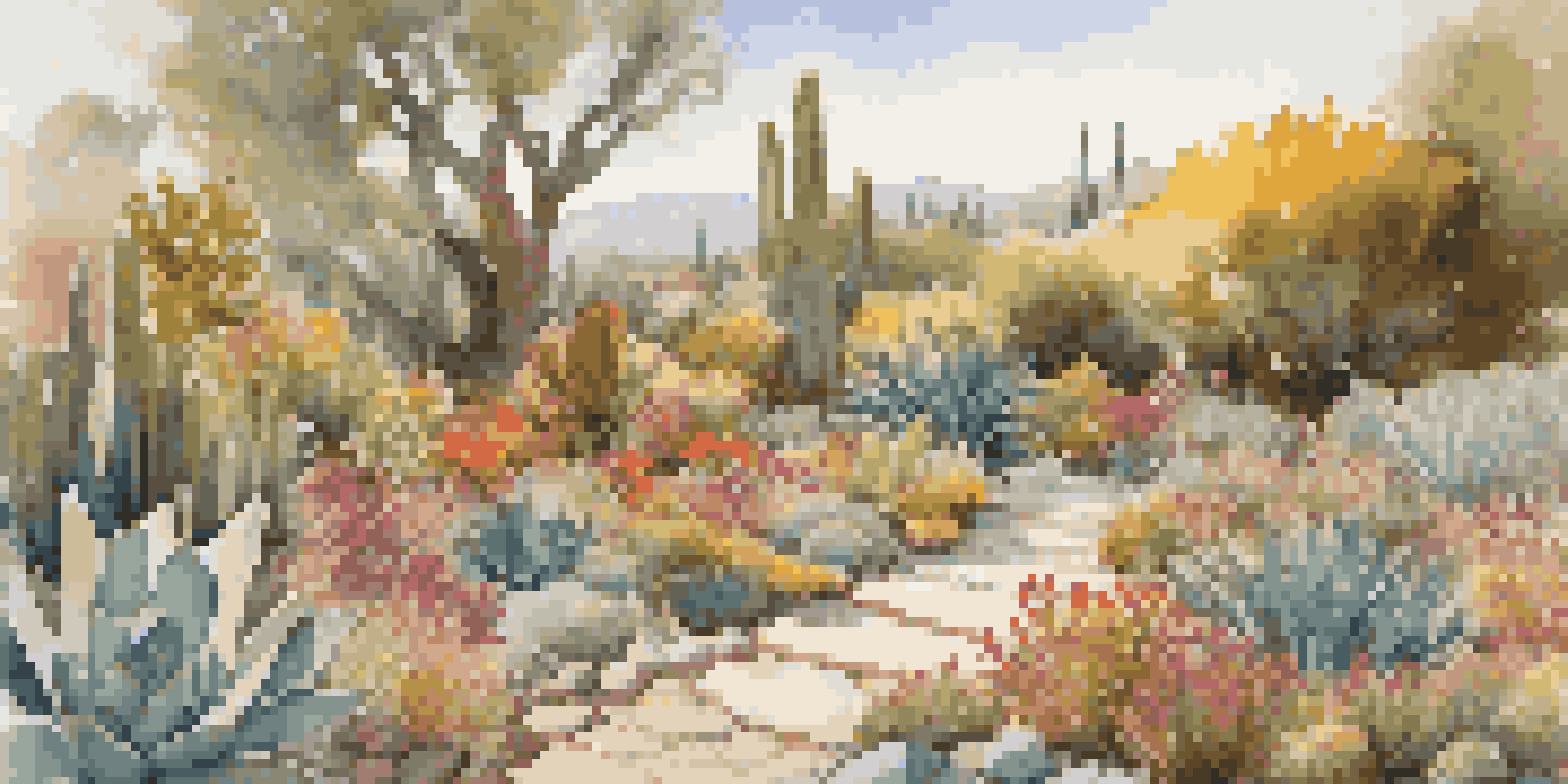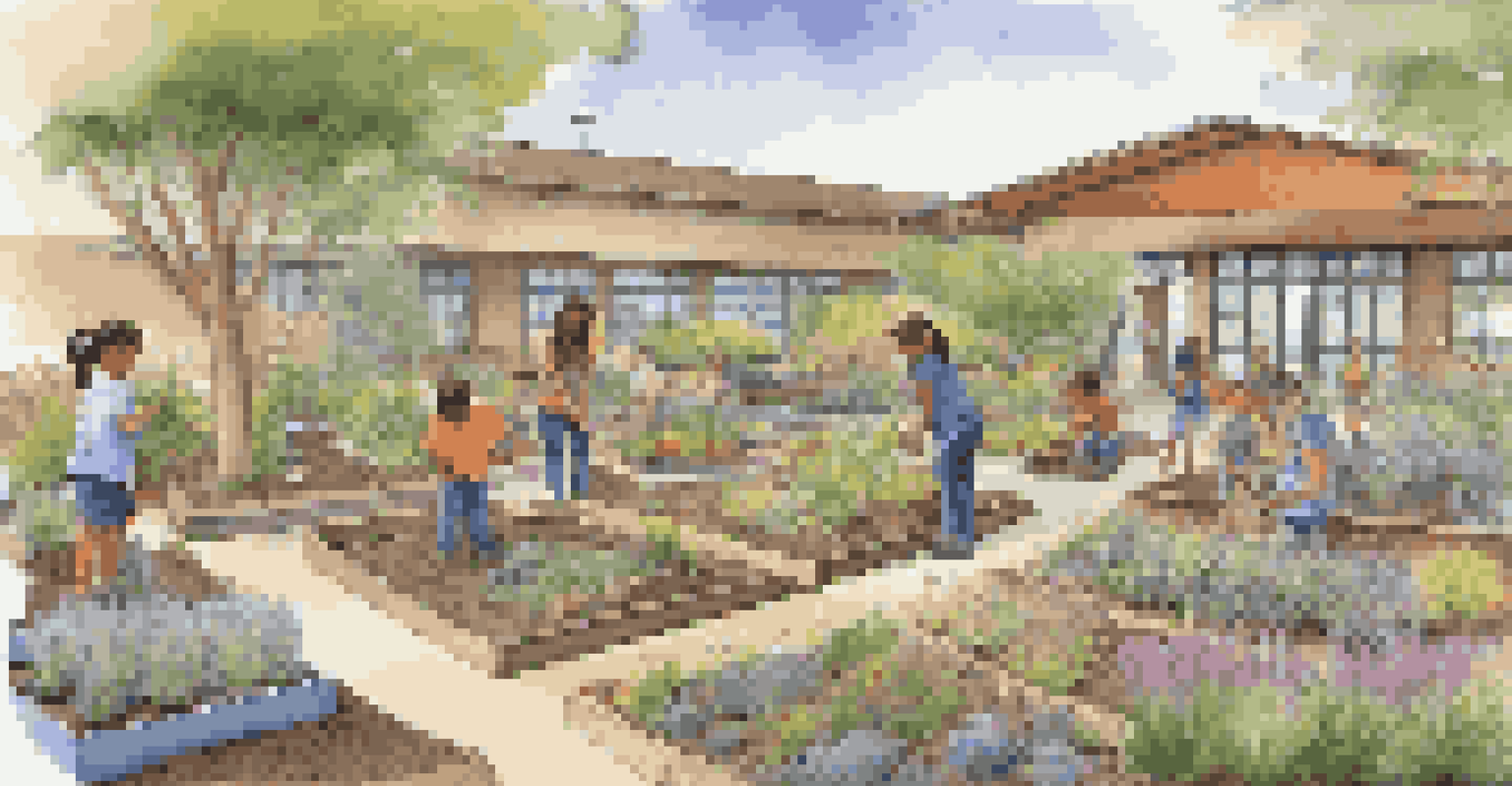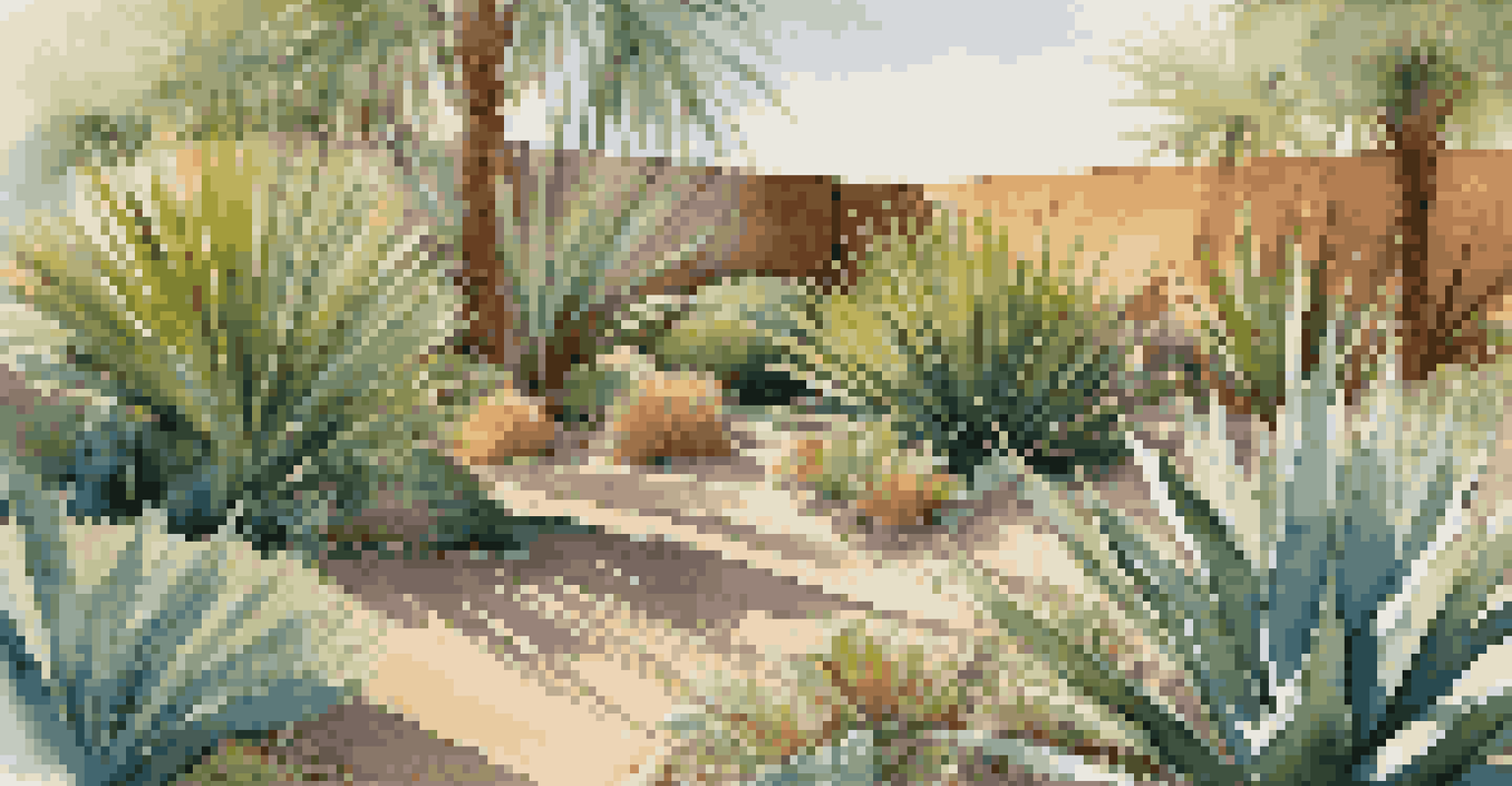Using Drought-Resistant Plants for Sustainable Gardening

Understanding Drought-Resistant Plants and Their Benefits
Drought-resistant plants are specially adapted to survive in arid conditions, requiring less water than traditional plants. They have unique features like deep root systems and thick leaves that help them retain moisture. By incorporating these plants into your garden, you not only contribute to water conservation but also lower maintenance costs.
The best time to plant a tree was twenty years ago. The second best time is now.
These plants thrive in diverse climates, making them an excellent choice for gardeners looking to reduce their environmental impact. For instance, succulents and native grasses are often found in regions with low rainfall, showcasing their ability to flourish in challenging conditions. This adaptability means you can enjoy a vibrant garden even during dry spells.
Moreover, drought-resistant plants often attract beneficial wildlife, such as pollinators and birds. By creating a habitat for these creatures, you promote biodiversity in your garden, which is essential for a healthy ecosystem. Ultimately, choosing drought-resistant plants is a win-win for both your garden and the environment.
Choosing the Right Drought-Resistant Plants for Your Garden
When selecting drought-resistant plants, consider your local climate and soil type. Native plants are often the best option since they are already adapted to your region’s conditions. For instance, if you live in a desert area, plants like agave or yucca can thrive with minimal water.

Another factor to consider is the amount of sunlight your garden receives. Some drought-resistant plants, such as lavender and rosemary, prefer full sun, while others, like ferns, can tolerate shade. Assessing these environmental factors will help you choose plants that will flourish in your specific garden setting.
Benefits of Drought-Resistant Plants
Drought-resistant plants conserve water, lower maintenance costs, and enhance biodiversity in gardens.
Don’t forget to mix and match different types of plants to create visual interest. Combining various textures, colors, and heights can lead to a stunning garden landscape. For example, pairing low-growing ground covers with taller flowering plants can create a layered effect that is both beautiful and functional.
Essential Tips for Planting Drought-Resistant Species
Proper planting techniques can greatly enhance the success of your drought-resistant garden. Start by preparing your soil well, as good drainage is crucial for these plants. Amend the soil with organic matter to improve its moisture retention, ensuring your plants have the best start possible.
Nature does not hurry, yet everything is accomplished.
Water your newly planted drought-resistant species deeply but infrequently. This encourages the roots to grow deeper into the soil, making them more resilient to dry conditions. A good rule of thumb is to water them once a week during their first month, tapering off as they establish.
Additionally, mulching around your plants can help retain moisture and suppress weeds. Organic mulches, like wood chips or straw, not only keep the soil temperature stable but also break down over time, enriching the soil. This simple practice can make a significant difference in your garden's health.
Creating a Sustainable Garden Design with Drought-Resistant Plants
Designing a sustainable garden involves more than just selecting plants; it's about creating an ecosystem that thrives together. Grouping drought-resistant plants by their water needs can optimize irrigation and reduce waste. For instance, placing succulents near a rock border can create a natural, low-water landscape.
Incorporating hardscaping elements, such as gravel paths or stone features, can also enhance your garden’s sustainability. These materials reduce the need for mowing and can help manage rainwater runoff, allowing it to soak into the ground rather than erode your garden beds. This thoughtful design approach promotes both beauty and functionality.
Choosing Plants for Local Conditions
Selecting native and climate-appropriate drought-resistant plants ensures they thrive in your garden's specific environment.
Finally, consider layering your garden with plants of various heights to create visual interest and promote healthy air circulation. Taller plants can provide shade for shorter ones, creating a microclimate that retains moisture and protects them from harsh conditions. This layered approach not only looks appealing but also supports the health of your garden.
Maintenance Tips for a Thriving Drought-Resistant Garden
While drought-resistant plants require less water, they still benefit from regular maintenance. It's essential to keep an eye on their growth and prune any dead or overgrown branches to encourage new growth. This not only keeps your garden looking tidy but also helps plants focus their energy on thriving.
Weed control is another crucial aspect of maintaining a sustainable garden. Weeds compete for nutrients and water, which can hinder the performance of your drought-resistant plants. Implementing a regular weeding schedule, coupled with mulch, can significantly reduce weed growth and keep your garden healthy.
Lastly, consider seasonal adjustments to your watering routine. During cooler months, your plants may require less water, while hotter months may call for a bit more. Observing your garden's needs and responding accordingly will ensure that your plants remain healthy and vibrant throughout the year.
The Environmental Impact of Drought-Resistant Gardening
Adopting drought-resistant gardening practices contributes significantly to environmental sustainability. By using less water, you’re helping to conserve this precious resource, especially in areas prone to drought. This shift not only preserves local water supplies but also reduces the energy needed for irrigation systems.
Moreover, drought-resistant plants often require fewer fertilizers and pesticides, leading to less chemical runoff into nearby waterways. This is particularly important for maintaining the health of local ecosystems, as these chemicals can harm aquatic life and disrupt natural habitats. Choosing native plants can further minimize this impact.
Sustainable Gardening Practices
Implementing proper planting techniques and maintenance routines supports a thriving, low-water garden ecosystem.
Additionally, these gardens can help mitigate the urban heat island effect, where cities become significantly warmer than surrounding areas. Drought-resistant gardens, filled with diverse plant life, can cool the environment, providing a more pleasant atmosphere for residents. In this way, your garden can be a small but powerful ally in combating climate change.
Community and Educational Benefits of Drought-Resistant Gardening
Drought-resistant gardening can serve as a platform for community engagement and education. By sharing your own experiences and successes, you inspire others to adopt sustainable practices in their gardens. Community workshops or local gardening clubs can be excellent venues for exchanging ideas and resources.
Schools and community centers can also benefit from incorporating drought-resistant plants into their landscapes. Educational gardens teach children about the importance of sustainability and environmental stewardship in a hands-on way. These experiences foster a greater understanding of nature and its resources.

Finally, collaborating with local gardening groups can lead to the exchange of native plant seeds, creating a sense of community and shared purpose. This not only promotes biodiversity but also helps ensure the survival of local plant species. Together, we can cultivate a greener future, one garden at a time.